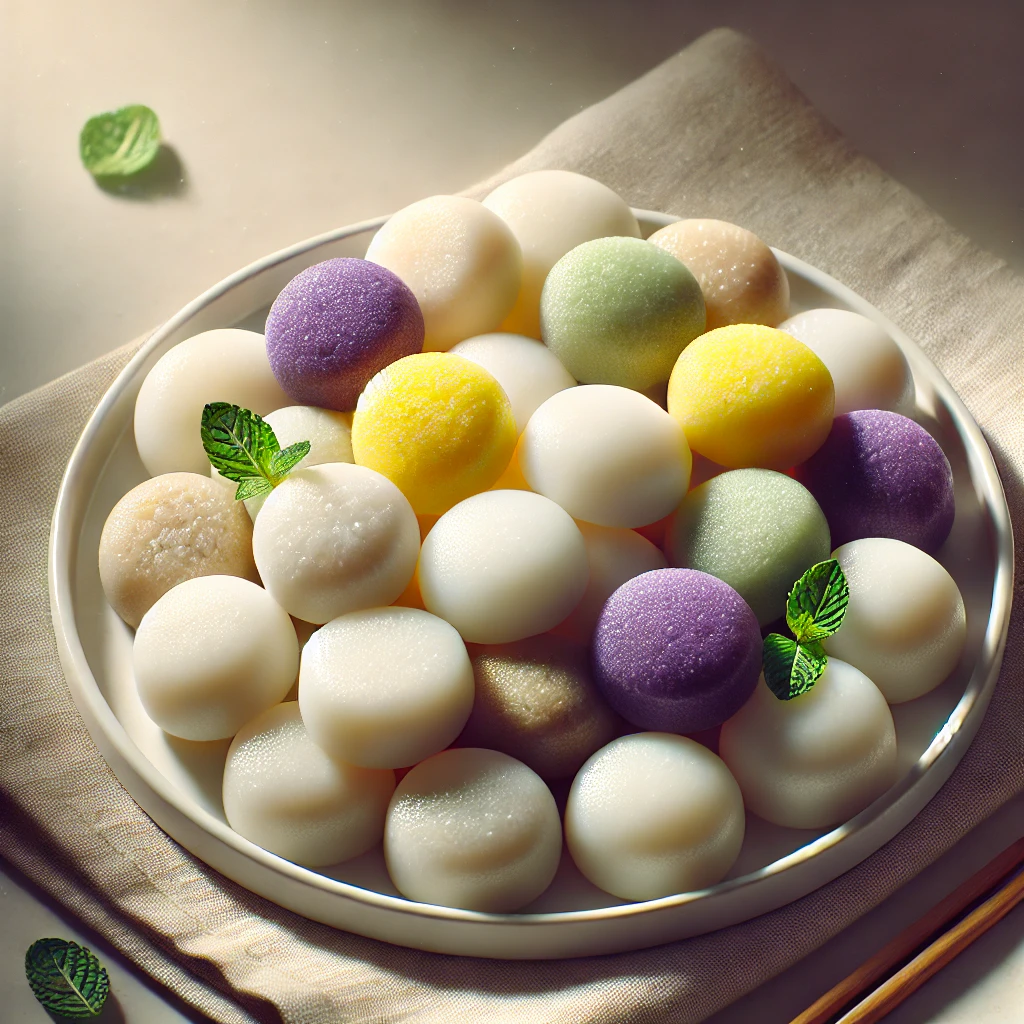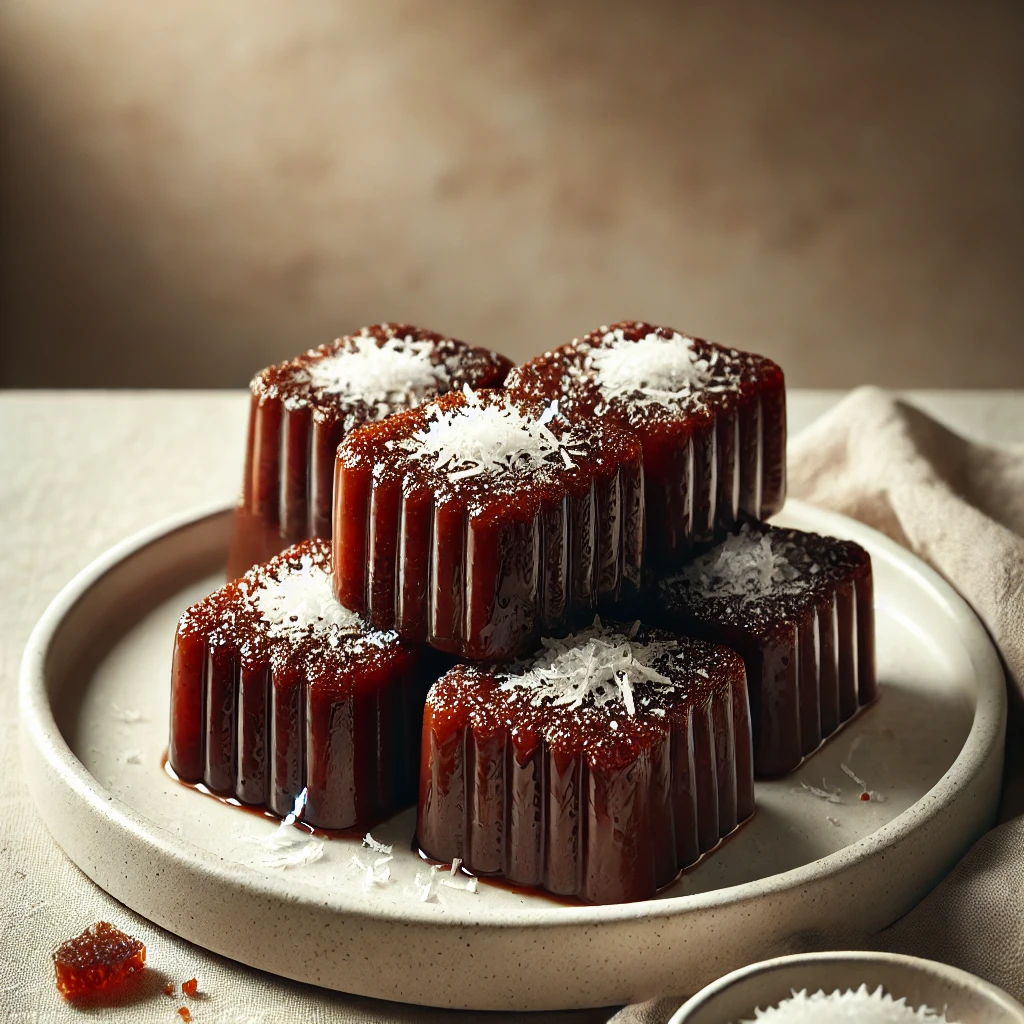Have you ever tasted a cloud? Imagine biting into a soft, pillowy treat that’s both light as air and bursting with flavor. That’s the magic of puto, the beloved Filipino steamed rice cake that has been captivating taste buds for generations. As a child growing up in a Filipino household, the sight and smell of freshly steamed puto always meant a special occasion was near. These small, round cakes weren’t just desserts; they were edible memories, each bite transporting me back to family gatherings and festive celebrations.
Puto isn’t just any ordinary cake. Its unique steaming process results in a texture that’s unlike anything you’ve ever experienced – moist, fluffy, and slightly chewy. What sets puto apart is its versatility. From classic white puto to vibrant purple ube-flavored variations, these little cakes are a canvas for creativity. They can be savory or sweet, plain or topped with cheese, and come in a rainbow of colors and flavors.
For those with dietary restrictions, puto offers a delightful alternative to traditional baked goods. Naturally gluten-free when made with rice flour, puto can easily be adapted for various dietary needs. Vegan versions are becoming increasingly popular, proving that this traditional treat can evolve with changing lifestyles while maintaining its cultural significance.
Recipe Ingredients
Let’s gather our ingredients for a classic white puto recipe that serves 6-8 people:
| Ingredient | Quantity | Notes |
|---|---|---|
| Rice flour | 2 cups | Finely ground |
| Granulated sugar | 1 cup | Adjust to taste |
| Baking powder | 1 tablespoon | For fluffiness |
| Salt | 1/4 teaspoon | Enhances flavor |
| Water | 1 1/2 cups | Room temperature |
| Coconut milk | 1/2 cup | Full-fat preferred |
| Vanilla extract | 1 teaspoon | Optional, for flavor |
| Grated cheese | 1/4 cup | For topping (optional) |
Substitution options:
- For a healthier version, replace 1/4 cup of sugar with stevia or another natural sweetener.
- Almond milk can be used instead of coconut milk for a different flavor profile.
- For colorful variations, add 1-2 drops of food coloring or natural food dyes like pandan extract for green or ube extract for purple.
Recipe Instructions
Follow these steps to create your perfect batch of puto:
- Prepare the steamer: Fill a large pot or wok with about 2 inches of water. Place a steamer basket inside, making sure the water doesn’t touch the bottom of the basket. Bring the water to a boil over medium-high heat.
- Mix dry ingredients: In a large bowl, whisk together the rice flour, sugar, baking powder, and salt until well combined.
- Add wet ingredients: Gradually pour in the water and coconut milk while stirring continuously to prevent lumps from forming. Add the vanilla extract if using.
- Strain the batter: For an extra smooth texture, pour the batter through a fine-mesh sieve to remove any lumps.
- Prepare molds: Lightly grease small molds or ramekins with oil or line them with cupcake liners. Fill each mold about 2/3 full with batter.
- Steam the puto: Place the filled molds in the steamer basket, leaving some space between each for the steam to circulate. Cover the steamer with a clean kitchen towel before putting on the lid to prevent water droplets from falling onto the puto. Steam for 15-20 minutes or until a toothpick inserted into the center comes out clean.
- Add toppings: If desired, sprinkle grated cheese on top of each puto during the last 2-3 minutes of steaming.
- Cool and serve: Once done, remove the puto from the steamer and let them cool for a few minutes before gently removing them from the molds. Serve warm or at room temperature.
Helpful tips:
- Ensure the water is at a rolling boil before placing the puto in the steamer.
- Avoid opening the steamer lid during cooking, as this can cause the puto to deflate.
- If you don’t have a traditional steamer, you can create a makeshift one using a large pot and a heat-safe plate or bowl.
Recipe Tips & Variations
Customization ideas:
- Flavor variations: Experiment with different extracts like pandan, ube, or even coffee for unique flavors.
- Texture play: Add shredded coconut or chopped nuts to the batter for added texture.
- Savory twist: Reduce the sugar and add grated cheese or chopped ham directly to the batter for a savory version.
Troubleshooting:
- If your puto turns out dense or gummy, you may have overmixed the batter. Mix just until the ingredients are combined.
- For extra fluffy puto, let the batter rest for 15-30 minutes before steaming.
Storage instructions:
Puto is best enjoyed fresh, but leftovers can be stored in an airtight container at room temperature for up to 2 days. To reheat, steam for 1-2 minutes or microwave for 10-15 seconds.
High-Quality Photos
[Note: As an AI language model, I cannot generate or include actual photos. In a real blog post, this section would contain high-quality images of the finished puto, ingredients, and possibly step-by-step photos of the cooking process.]
Nutritional Information
Here’s an approximate nutritional breakdown per serving (assuming 8 servings):
| Nutrient | Amount per Serving |
|---|---|
| Calories | 180 |
| Total Fat | 2g |
| Saturated Fat | 1.5g |
| Cholesterol | 0mg |
| Sodium | 80mg |
| Total Carbohydrates | 38g |
| Dietary Fiber | 0g |
| Sugars | 15g |
| Protein | 2g |
Please note that these values may vary depending on specific ingredients and portion sizes.
Conclusion
As I take a bite of freshly steamed puto, I’m instantly transported back to my grandmother’s kitchen, where the air was always filled with the sweet aroma of these heavenly rice cakes. There’s something magical about how a simple combination of ingredients can create such a beloved treat that has stood the test of time.
Puto isn’t just a recipe; it’s a piece of Filipino culture that you can recreate in your own kitchen. Whether you’re exploring your culinary roots or embarking on a new gastronomic adventure, these steamed rice cakes are sure to bring a smile to your face and warmth to your heart.
I encourage you to try this recipe and make it your own. Experiment with flavors, play with colors, and most importantly, share the joy of puto with your loved ones. Food has a beautiful way of bringing people together, and puto is no exception. As you savor each fluffy bite, remember that you’re not just enjoying a delicious treat – you’re partaking in a rich cultural tradition that has delighted generations.
Don’t stop at puto! Filipino cuisine is a treasure trove of flavors waiting to be explored. From savory adobo to sweet halo-halo, there’s a world of culinary delights to discover. Why not make puto the start of your Filipino food journey?
I’d love to hear about your puto-making adventures! Did you try any unique flavor combinations? How did your family and friends react to this Filipino delicacy? Share your experiences and photos on social media using #PutoPerfection or leave a comment below. Your creativity might inspire others to embark on their own puto-making journey!
Remember, cooking is an art, and every artist needs practice. Don’t be discouraged if your first batch isn’t perfect – each steamed cake is a step towards mastery. Before you know it, you’ll be the puto expert in your circle, ready to pass on this delightful tradition to the next generation.
So, fire up that steamer, gather your ingredients, and let the magic of puto-making begin. Who knows? You might just start a new tradition in your home, one fluffy, flavorful rice cake at a time.
Additional Elements
Related recipes and pairings:
- Pair your puto with a steaming cup of salabat (Filipino ginger tea) for a comforting snack.
- Try making bibingka, another Filipino rice cake that’s baked instead of steamed, for a delicious comparison.
- Serve puto alongside savory dishes like dinuguan (pork blood stew) for a traditional Filipino meal experience.
Serving suggestions:
- Arrange puto on a banana leaf-lined platter for an authentic Filipino presentation.
- Create a puto bar with various toppings like grated cheese, coconut jam (kaya), and butter for guests to customize their treats.
Equipment recommendations:
- Bamboo steamer for an authentic touch and even steam distribution.
- Silicon molds or puto molds for perfectly shaped cakes.
- A fine-mesh strainer for achieving the smoothest batter possible.
Historical and cultural context:
Puto has deep roots in Philippine culture, with variations found across the archipelago. Historically, it was made using fermented ground rice, a method still used in some traditional recipes. The addition of baking powder in modern recipes has simplified the process while maintaining the beloved texture.
In Filipino culture, puto is more than just a snack. It’s often served during fiestas, holiday celebrations, and even as an offering during All Saints’ Day. The act of making and sharing puto is a way of preserving cultural heritage and passing down traditions from one generation to the next.
The versatility of puto reflects the adaptability of Filipino cuisine. From the influence of Spanish colonizers to the integration of American ingredients, puto has evolved while retaining its essence. Today, as global cuisines intermingle, we see fusion versions of puto emerging, showcasing its enduring popularity and ability to embrace change.
As you embark on your puto-making adventure, remember that you’re not just creating a delicious treat – you’re participating in a rich culinary tradition that spans centuries. Each puto you steam is a small but significant act of cultural preservation, a delicious bridge between past and present.
So, whether you’re Filipino by birth, by heritage, or simply by culinary interest, let the humble puto be your guide into a world of flavor, tradition, and joy. Happy steaming!
Disclaimer: This recipe blog post is based on information available up to 2019. Culinary trends and nutritional understanding may have evolved since then. Please consult current sources for the most up-to-date information on ingredients, techniques, and dietary considerations. If you notice any inaccuracies in this post, please report them so we can correct them promptly.




